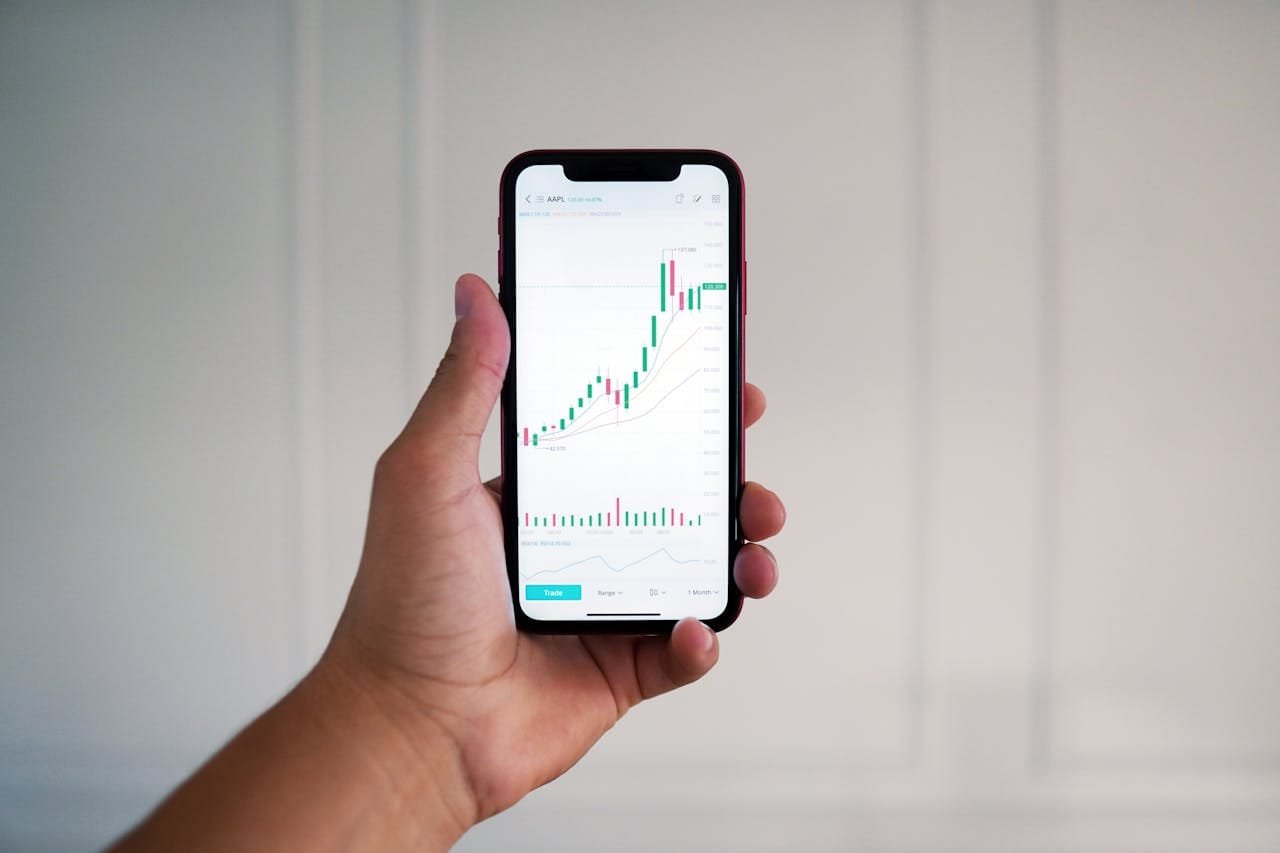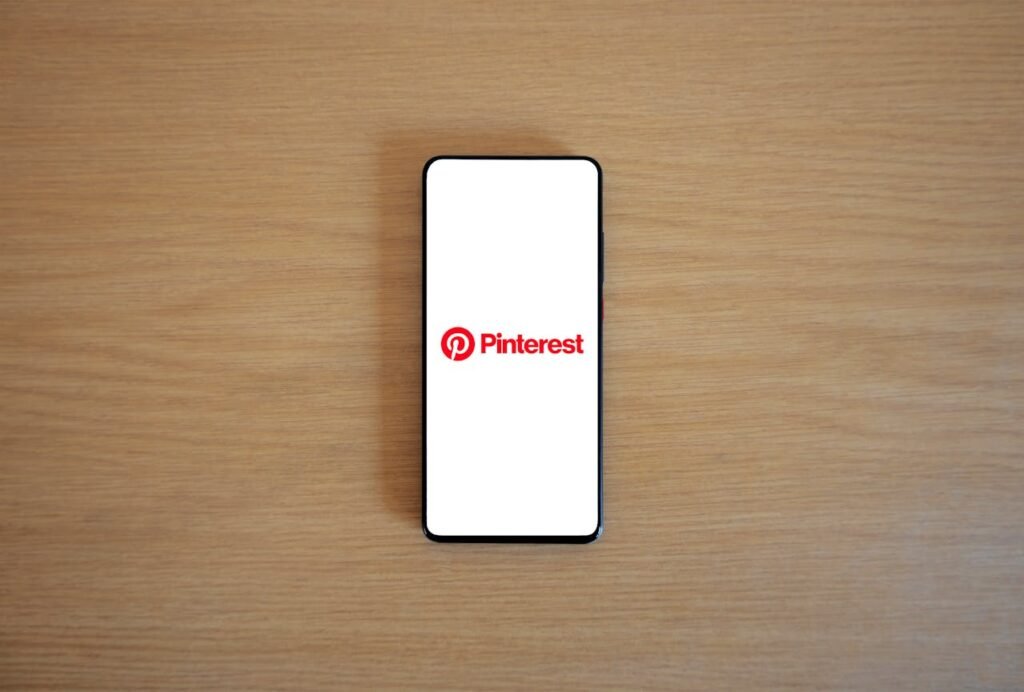When market conditions change suddenly, brands often face new challenges. The strategies that once worked well may not be as effective, and every decision feels more critical than ever. Protecting your brand equity—your brand’s reputation, customer loyalty, and overall value—becomes essential to staying strong through uncertain times. Brand equity is about more than just a name or logo; it’s the trust and recognition that customers associate with your brand.
In this guide, we’ll explore actionable strategies for CEOs and CMOs to safeguard and strengthen brand equity, even when market conditions are shifting at a rapid pace. We’ll cover everything from understanding shifts in customer needs to aligning your messaging and doubling down on your core values. By being proactive, adaptive, and focused, you can maintain the integrity and value of your brand through any storm.
Step 1: Understand and Respond to Shifts in Customer Needs
Stay Attuned to Your Audience’s Changing Priorities
When markets shift, so do the needs and expectations of your customers. A product or message that resonated a month ago may now feel irrelevant, out of touch, or even insensitive. To protect brand equity, it’s crucial to listen closely to your audience and respond with empathy and relevance. Surveys, social media listening, and customer feedback provide invaluable insight into how your audience’s needs are evolving.
For example, if an economic downturn occurs, customers may prioritize value over luxury. If you’re a high-end brand, this doesn’t mean you have to change your identity, but it does mean adjusting your messaging to emphasize long-term value, durability, or the unique qualities that justify your brand’s price point. Staying connected to these evolving priorities lets you adapt quickly without compromising your core brand identity.
Analyze Shifts in Behavior and Adjust Offerings
Beyond listening to your audience, examine customer behavior to identify any emerging trends. For example, during times of economic instability, you may see a rise in customers looking for flexible payment options, bundled deals, or essentials over premium items. By offering solutions that meet these needs, you show that your brand is in touch with the reality your customers are facing.
If you notice a trend where customers are moving towards smaller, more essential purchases, consider offering a value-oriented version of your product. This allows you to meet customers where they are without altering your entire product line. By responding to shifts in a meaningful way, you maintain brand relevance and continue to build trust—even in challenging times.
Step 2: Reinforce Your Brand’s Core Values

Double Down on Authenticity and Integrity
Brand equity thrives when customers perceive authenticity. When market conditions become unpredictable, doubling down on authenticity and integrity strengthens the relationship you have with your audience. Avoid making reactionary changes that could come across as opportunistic or disingenuous. Instead, focus on consistent values and actions that reflect who you are as a brand.
For instance, if your brand has always championed sustainability, maintain this focus, even if it’s tempting to cut costs on sustainable materials. Consumers who identify with your brand’s environmental stance will appreciate that you stayed true to your values, enhancing brand loyalty. During uncertain times, authenticity isn’t just a marketing buzzword; it’s the foundation of long-term brand equity.
Showcase Your Brand’s Purpose in Practical Ways
People are drawn to brands that stand for something beyond profits. Use market shifts as an opportunity to highlight your brand’s purpose in meaningful ways. This could mean launching initiatives that give back to the community, supporting employees in visible ways, or focusing on environmental responsibility. Actions speak louder than words, especially when conditions are tough.
For example, during a public health crisis, some brands donated supplies, offered free services, or provided resources to their local communities. These initiatives not only benefit society but also reinforce the brand’s commitment to its values. Customers remember brands that offer practical support, and these actions strengthen your brand’s reputation, even in difficult circumstances.
Step 3: Maintain Transparent and Consistent Communication
Be Clear About Changes in Products, Services, or Policies
If a market shift impacts your products or services, be upfront with your customers. Transparency builds trust, and customers appreciate brands that communicate openly rather than hiding behind vague statements or making promises they can’t keep. Whether it’s changes in pricing, product availability, or customer support hours, clarity in communication goes a long way in maintaining customer confidence.
For example, if you’re facing supply chain delays that affect delivery times, communicate this on your website, through emails, and on social media. Explain why these delays are happening and what you’re doing to minimize the impact on customers. Proactively setting expectations reduces frustration and demonstrates that you value honesty and transparency.
Use a Consistent Tone and Voice Across All Channels
When conditions are volatile, consistency in tone and voice helps reinforce brand equity. Stick to a voice that reflects your brand identity, whether it’s supportive, optimistic, or informative. Consistency reassures customers that your brand remains grounded, even if the world around them feels uncertain.
For example, if your brand typically uses a friendly, approachable tone, maintain that voice in all your communications, even when discussing difficult topics. This consistency reinforces your brand’s personality, helping customers feel connected and familiar with your messaging. Consistency during times of change demonstrates that your brand is a stable presence, which bolsters trust.
Step 4: Adapt Your Marketing Strategy Without Compromising Quality

Prioritize Core Products and High-Value Offers
When market conditions shift, it’s essential to focus on what matters most. Prioritize your core products—the ones that represent your brand’s essence and generate the most value. Rather than launching new products, emphasize the quality, reliability, or uniqueness of your existing offerings. This approach conserves resources and keeps your brand message clear.
For instance, if you’re a beauty brand known for skincare, focus on your most popular skincare items and promote them as staples in a skincare routine. By doubling down on what your brand is known for, you reinforce customer trust, showing that you’re not simply trying to pivot but are confident in your brand’s core offerings.
Optimize for Efficiency in Digital Marketing Channels
A shifting market often means tighter marketing budgets, making it critical to maximize efficiency. Reevaluate your digital marketing channels to focus on the platforms and strategies that yield the highest engagement and ROI. SEO, content marketing, and email marketing tend to be cost-effective strategies that maintain brand visibility without excessive spend.
If you were investing heavily in paid ads, consider shifting some of that budget to content creation or SEO, which may offer longer-term benefits for brand visibility. High-value, educational content helps you engage with customers meaningfully, even if they aren’t ready to buy. By focusing on efficient marketing tactics, you can protect your brand equity while adjusting to current economic conditions.
Step 5: Strengthen Relationships with Existing Customers
Reward Loyalty and Show Appreciation
Your existing customers are one of your brand’s most valuable assets. In times of change, showing appreciation and rewarding loyalty can go a long way in protecting brand equity. Offer exclusive deals, special perks, or early access to new products to loyal customers. These small gestures of appreciation help reinforce loyalty and demonstrate that you value your customers.
For example, if you’re facing economic uncertainty, consider providing a loyalty discount or offering access to a special service for your long-time customers. These actions show customers that they are a priority, strengthening the bond they have with your brand. When customers feel valued, they’re more likely to stick with you through ups and downs.
Create Content That Offers Value and Builds Trust
Content that provides value beyond promoting products can reinforce brand trust. Think of content as an opportunity to be a helpful resource for your audience. Create blog posts, guides, or videos that address current challenges or provide solutions. By focusing on customer needs and pain points, you position your brand as a knowledgeable, caring resource.
For instance, a financial services brand could create content on managing finances during economic downturns, offering practical tips without promoting specific products. This approach builds trust, as customers see your brand as genuinely invested in their well-being. By offering valuable information, you demonstrate that your brand is here to help, not just to sell.

Related: Check out our free tools:

Step 6: Monitor and Adjust Based on Market and Customer Feedback
Keep a Close Eye on Market Data and Trends
When conditions shift rapidly, keeping your finger on the pulse of the market is essential. Regularly review industry reports, economic forecasts, and competitive activity. Monitoring these indicators helps you anticipate potential challenges and respond proactively. By staying informed, you can make adjustments that align with broader market trends while protecting your brand identity.
For example, if a downturn affects your industry, you may need to adjust pricing strategies or explore cost-saving measures that don’t compromise product quality. Understanding where the market is headed allows you to make more informed decisions and avoid surprises. An informed, proactive approach is key to navigating uncertain markets while maintaining brand equity.
Listen to Customer Feedback and Adapt Accordingly
Customer feedback becomes especially valuable when market conditions are volatile. Pay attention to feedback through reviews, surveys, social media, and customer service interactions. Customers are quick to notice and share changes in pricing, product quality, or service. Listening and responding to their feedback shows that you value their opinions and are committed to continuous improvement.
For example, if customers express concerns about pricing changes, consider offering flexible payment plans or bundles. Addressing feedback directly strengthens the relationship and shows that your brand is adaptable without compromising its values. By listening closely, you can make adjustments that not only maintain trust but also reinforce brand equity.
Step 7: Embrace Resilience and Long-Term Thinking

Focus on Building a Resilient Brand
Rapid market changes test a brand’s resilience. Instead of making short-term, reactive decisions, prioritize long-term resilience. This may involve focusing on your core values, maintaining quality standards, or fostering customer loyalty. Building a resilient brand means thinking beyond immediate gains, aiming for a reputation that endures.
Consider a brand that’s known for quality craftsmanship. Even if market conditions push other brands to cut costs, maintaining high standards becomes an anchor. Customers remember brands that stay true to their core, and this reliability is a significant part of brand equity. Resilience isn’t about avoiding change; it’s about staying grounded in your brand’s identity even as you adapt.
Invest in Brand Equity for the Long Haul
Brand equity isn’t built overnight, and it isn’t lost in a single crisis. By viewing brand equity as a long-term investment, you create a foundation that can withstand shifts and continue delivering value to customers. Protecting brand equity means staying true to your brand’s promise, even if it requires short-term sacrifices.
For example, if you’re faced with a decision between rapid growth tactics that may dilute your brand and slower, steady growth that maintains your values, prioritize the latter. A brand that customers trust and respect can recover from market disruptions more effectively. Long-term brand equity is a valuable asset that pays off, providing stability, customer loyalty, and opportunities for sustainable growth.
Step 8: Leveraging Brand Loyalty as a Shield Against Market Shifts
Cultivate a Community of Advocates
Brand loyalty is one of your strongest assets when navigating shifting market conditions. Loyal customers are more likely to stick with you through changes and even advocate on your behalf, offering invaluable word-of-mouth support. Strengthen your brand community by engaging customers in ways that make them feel valued and connected to your brand.
For instance, create opportunities for loyal customers to share their experiences, participate in product development feedback, or join exclusive online groups. A brand community gives customers a sense of belonging, enhancing loyalty and making them more resilient to external factors. These advocates become a shield, helping reinforce your brand equity even as conditions fluctuate.
Offer Exclusive Benefits or Rewards to Loyal Customers
Rewarding loyalty demonstrates appreciation and builds an emotional connection that strengthens brand equity. Offering exclusive benefits or rewards shows that you value your loyal customers, and these perks act as a buffer, encouraging them to stay even if market conditions become unpredictable.
For example, a premium loyalty program that includes early access to new products, special discounts, or birthday rewards can keep customers engaged. If budget constraints prevent extravagant offerings, even small gestures like personalized thank-you emails or recognition in social media posts can deepen the relationship. In uncertain times, loyal customers who feel appreciated are less likely to shift their allegiance.
Step 9: Revisiting and Refining Your Brand Positioning

Embrace Agility in Brand Messaging
While consistency is essential, maintaining flexibility in your brand messaging allows you to stay relevant. Market conditions may prompt you to adjust your positioning slightly to align better with current needs or to highlight different aspects of your brand’s value. Agility in messaging ensures that your brand remains relevant without drifting away from its core identity.
For instance, if your brand traditionally focuses on luxury, but economic conditions change, you might emphasize the durability or investment value of your products rather than exclusivity. This shift allows you to align with customer concerns (such as value for money) without sacrificing your luxury positioning. Agility doesn’t mean altering who you are; it means spotlighting aspects that best resonate with customers’ current realities.
Reassess Your Brand Differentiators
In fluctuating markets, the differentiators that once set your brand apart may need adjustment or amplification. Take the time to revisit your unique value propositions to ensure they still hold meaning in the current environment. Your differentiation should reflect what makes your brand essential and valuable, even in a time of change.
For example, if your brand differentiates itself by offering premium customer support, consider how you can enhance or emphasize that experience to provide even more value. Perhaps you can offer extended support hours, self-help resources, or a dedicated hotline for loyal customers. By focusing on differentiation that’s meaningful and relevant, you remind customers why they chose your brand in the first place, protecting brand equity through clarity and relevance.
Step 10: Preparing for Long-Term Brand Resilience
Invest in Employee Training Focused on Customer-Centric Approaches
Your team is a crucial part of your brand’s front line. Employees who are well-equipped to respond empathetically and knowledgeably reinforce trust and satisfaction, protecting your brand equity. Invest in training that emphasizes customer service, adaptability, and the importance of your brand’s values, so your team can embody these principles in every customer interaction.
For example, equip your team with training on conflict resolution, problem-solving, and proactive communication. When employees are empowered to handle challenges with confidence and care, they become ambassadors for your brand, helping to maintain consistency in values and trustworthiness. Customers feel reassured when they encounter a knowledgeable, empathetic team that reflects the brand’s commitment to them.
Prioritize Innovation That Enhances Core Brand Strengths
Adaptability doesn’t just mean reacting to market conditions; it also means proactively investing in innovations that reinforce your brand’s core strengths. Innovation, when aligned with your brand’s identity, can be a valuable tool in building resilience. Focus on innovations that make your products or services even better, more accessible, or more relevant to your audience.
For example, if you’re a tech company focused on simplifying workflows, invest in features that enhance ease of use or provide additional integrations with popular tools. By innovating in a way that aligns with your core strengths, you improve customer experience and reinforce brand equity. When customers see your brand evolving in ways that enhance their experience, they’re more likely to stay loyal, even in uncertain times.
Final Thoughts: Prioritizing Trust and Consistency in an Unpredictable World
Market shifts are inevitable, but by protecting your brand equity, you ensure that your brand remains a trusted presence in your customers’ lives. During times of change, customers look for brands they can rely on—those that are consistent, responsive, and true to their values. For CEOs and CMOs, maintaining brand equity requires a steady hand, a clear vision, and a commitment to authenticity.
By understanding customer needs, reinforcing core values, communicating transparently, and focusing on long-term resilience, you create a brand that stands strong regardless of external pressures. Each step taken to protect brand equity is a step toward building a brand that customers trust, respect, and want to support.
In the end, protecting brand equity isn’t just about survival; it’s about thriving through change. When you prioritize brand equity, you’re not only ensuring continuity for your business—you’re reinforcing the promise of your brand to the people who matter most. Embrace this opportunity to demonstrate resilience, nurture trust, and show that even in an uncertain world, your brand remains a steadfast, reliable force.
READ NEXT:
- Are Vanity Metrics Killing Your Marketing Efficiency? Here’s What to Track Instead
- Pinpointing Digital Marketing ROI: Why Your Metrics Aren’t Telling the Full Story
- Unlocking Real ROI in Digital Marketing: The Hidden Costs Draining Your Budget
- How Misaligned Marketing Funnels Are Blocking Your ROI Potential
- Best Digital Marketing Agency In Santa Ana, California
- Best Digital Marketing Agency In San Francisco, California




















